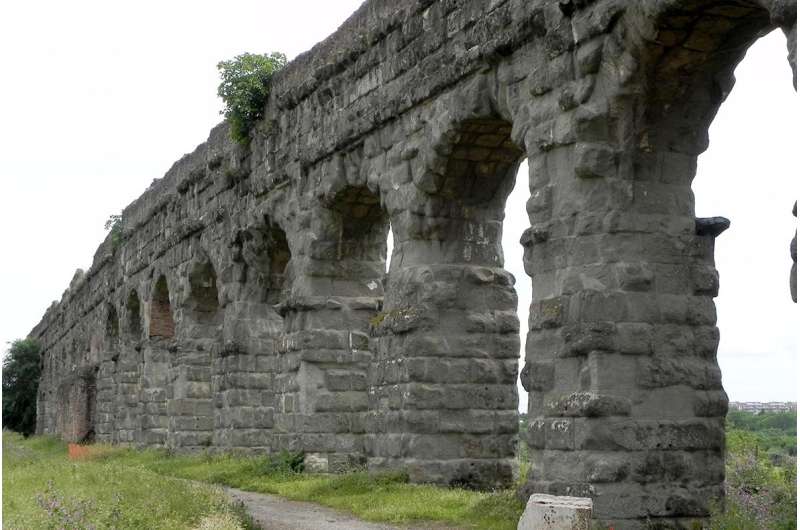
Mineral-rich waters originating from the Apennine Mountains of Italy flowed through ancient Rome's Anio Novus aqueduct and left behind a detailed rock record of past hydraulic conditions, researchers have said. Two studies characterizing layered limestone—called travertine—deposits within the Anio Novus are the first to document the occurrence of anti-gravity growth ripples and establish that these features lend clues to the history of ancient water conveyance and storage systems.
These multidisciplinary studies, led by University of Illinois Urbana-Champaign geology professor Bruce Fouke and published in the journals Scientific Reports and GSA Special Papers, apply advanced engineering principles and high-resolution microscopy to establish a controversial new theory about how the rippled travertine formed, Fouke said.
As the water—sourced from the Anio River and an underground lake near Subiaco, Italy—flowed, it left behind rippled layers of calcium carbonate travertine that accumulated along the inside floors, walls and ceilings of the Anio Novus aqueduct.
In the field, the researchers collected upstream-downstream oriented travertine samples that exhibit two standout features: millimeter-scale light and dark layering patterns, and centimeter-scale wavy ripple shapes persist throughout those layers.
Previous studies have proposed, without evidence, that the layers in the Anio Novus travertine are the result of changes in flow rate initiated by seasonal change or engineering methods put in place by the Romans, the researchers said. However, travertine with similar layering forms in ancient aqueduct systems occurs worldwide, regardless of regional climate or operation.

Layered limestone deposits give unique insight to Roman aqueducts
Mineral-rich waters originating from the Apennine Mountains of Italy flowed through ancient Rome's Anio Novus aqueduct and left behind a detailed rock record of past hydraulic conditions, researchers have said. Two studies characterizing layered limestone—called travertine—deposits within the...
